“Third wave” is the new hip buzzword. This Third Wave coffee place this. These Third Wave coffee beans that. If you don’t know what it means, you’re not just missing out on a bit of vocab. You won’t understand the entire modern movement about how coffee is grown, processed, brewed and sold.
In this article, you’ll discover exactly what the “Third Wave” of coffee is along with where the name comes from. You’ll find out all about the second and first waves, too. You’ll even get my (humble) opinion on where the fourth wave will take us.
What Is The Third Wave Of Coffee?
The Third Wave of Coffee refers to a coffee movement that began around the early 2000s. This movement prioritised artisanal coffee of the highest quality, and it caught on like wildfire. Within a few short years, thousands of independent Third wave coffee shops and roasters took market share from the large coffee chains that dominated the industry.
The Third Wave of coffee is a microcosm of broader market trends. People prefer buying quality products from smaller, independent companies, often with a focus on ethical sourcing. An obvious comparison is with the craft beer movement, which also exploded around the same time.
Here are the six hallmarks of Third Wave coffee. In my opinion, at least.
1. Single origin beans
Single origin coffee is when all the coffee beans comes from one place. Sometimes even only one farm — called a “microlot”.
Coffee beans are being produced and roasted to highlight their specific characteristics and tasting notes rather than being blended with other coffee beans to provide a smoother, but less distinguished taste.
Forty years ago, a friendly barista might recommend a blend like the smooth-tasting Mocha-Java. These days, he or she might tell you to buy a fruity Ethiopian Yirgacheffe, or a chocolatey Guatemala Huehuetenango.
2. New methods
The Third Wave brought new ways to brew coffee. Take the Aeropress for example, only invented in 2005. Or the Hario V60, a type of pour over that isn’t even a decade old. Even devices that had fallen by the wayside like Siphon coffee, the Chemex or Cold Brew coffee makers have come back into fashion.
3. Independent roasters
Whereas once, a company that roasted coffee would be more like a factory assembly line with coffee beans sold nationwide. These days, you can find a one-man-shop selling artisanal coffee beans in every town or village. I can stroll around my neighbourhood and walk past three roasters, and there’s probably a kickass one near you, too
A few crazy cats are even pushing the boundaries of coffee roasting. The hyper-caffeinated Death Wish coffee fits the bill, here.
4. Independent coffee shops
Fifty years ago, large commercial chains dominated high streets. You wanted a coffee? Better find your nearest Starbucks. These days the landscape has totally changed.
The big boys still exist, and still do great business. But there’s rarely a town or city across the country where you’re not more than a short walk or drive from an independent coffee joint. One that’ll serve you up a freshly roasted coffee or espresso that will blow your mind.
5. New equipment and gadgets
Entrepreneurs are diving headfirst into the world of coffee, but it’s not just roasters and coffee shops they’ve got their sights on.
New brewers are hitting the market, for one. Maybe you’ve heard of the Aeropress? I know folks who won’t make a coffee with anything else. But that’s just the tip of the iceberg. There’s pour overs, and cold brewers and tons of stuff.
Need a new grinder? You can bet some whizzkid is figuring out the way to engineer titanium burrs that’ll make your coffee sing. What about a scale? Even ways to measure your coffee are entering the 21st century. The Acaia Pearl is a cool example that links to your smartphone.
6. Sharing of information
Information is shared so freely nowadays. You don’t need some article at the back of a trade magazine to make great coffee. A quick Google search (or ten) and you’re away!
Honestly, the barriers to entry to making coffee are so low. Information’s everywhere. No excuses to not be making the good stuff.
When did the third wave of coffee begin?
The Third Wave of coffee had its roots in the adoption of quality sourcing of coffee around the 1970s and 1980s. It began to be widespread in the early 2000s and this is when the term “Third Wave of coffee” really caught on.
We can see this using Google Ngram, which shows when the term was used in writing over the years. We see a huge spike in the mid 2000s of the use of the term “Third Wave coffee”.
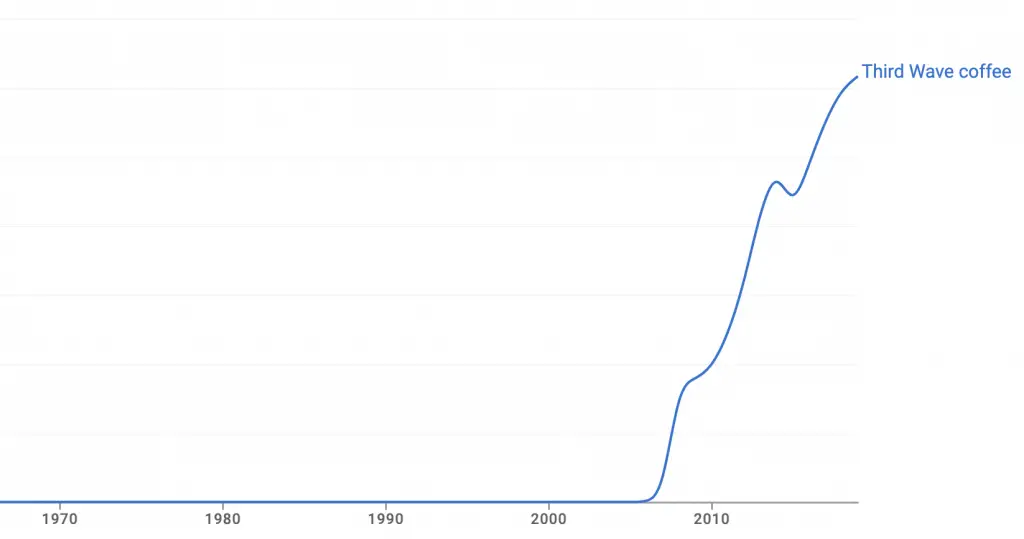
And, interestingly, if we only choose “Third Wave”, we can see the term starts to be used in the 1960s.
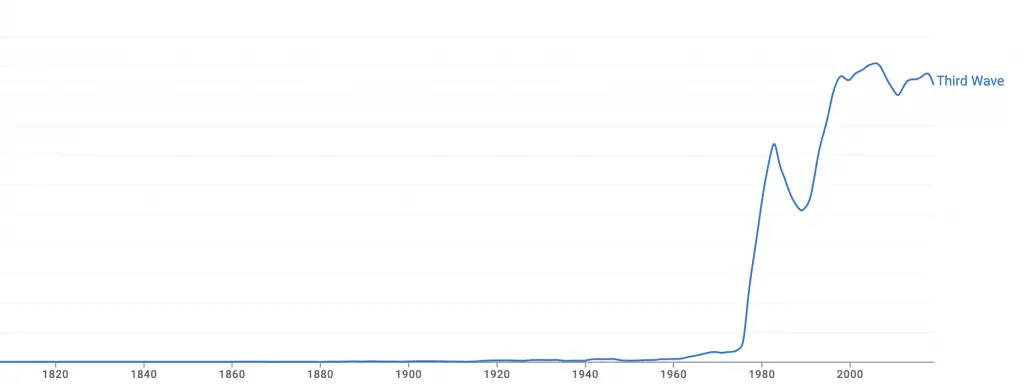
What are the waves of coffee?
Third wave of coffee is called so because it’s the third in a series of revolutions in the coffee world. The first was when coffee became popular in the 1800s, and the second was when Italian-style espresso coffee caught on.
How did third wave coffee start? Well, it was the gradual move towards artisanal coffee making. Consumers wanted to buy high quality coffee from local coffee shops and local roasters. Once the demand was there, the craze just exploded.
| 1st Wave | 2nd Wave | 3rd Wave | |
|---|---|---|---|
| Global spread of coffee drinking | Introduction of Italian-style espresso bars | Artisanal approach to coffee making | |
| When? | 1800s/1900s | 1960s/70s | early 2000s |
| Big Names | Folgers, Maxwell House | Peet’s, Starbuck’s | Stumptown, Blue Bottle |
| Characterized by… | Mass production, preground coffee, buying from the grocery store, vacuum packed coffee | Espresso in the US, blended coffee beans, popularity of chain coffee shops | Single Origin coffee, Emphasis on light or dark roasts, New methods like the Aeropress or V60 Pour Over |
What was the first wave of coffee?
The First Wave of Coffee happened in the late 19th century and early 20th century. This is when coffee took off into the mainstream in the US.
Before this, coffee was still considered a luxury item. It was expensive, not easily available or easy to brew. Once the techniques to create instant coffee were invented though, all bets were off.
All of a sudden, the advent of large factories and mass production made fresh coffee available to the masses and is credited with popularizing the drink across the USA.
What was the second wave of coffee?
The Second Wave of Coffee refers to the influx in the 1960s and 1970s of chains copying the Italian model of coffee houses. Hulking espresso machines and new-fangled drinks like the Cappuccino or Latte were the order of the day.
The coffee wasn’t exactly like the espresso bars of Europe, but nonetheless people flocked to the new names that sprang up on their high streets. Companies like Starbucks and Peet’s became household names (and made a lot of money).
I don’t think it’s a stretch to say that this wave changed the very fabric of society. In just a few years, the idea of “meeting for a coffee” was in. Now Saturday afternoon meant a couple of hours gossiping with your bestie over a Macchiato and some cake.
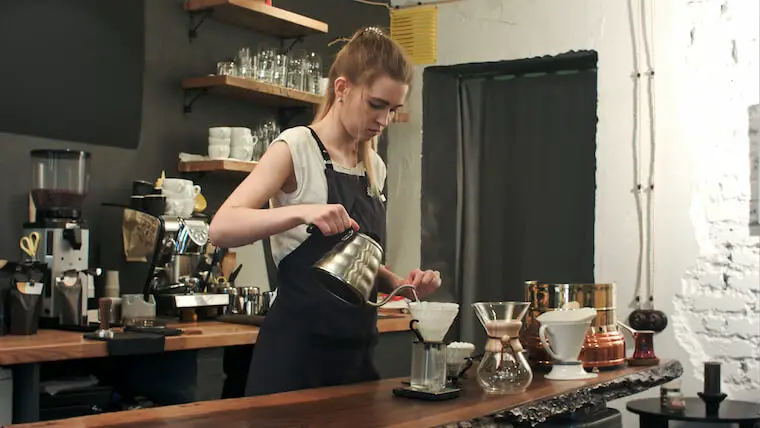
What are the advantages of third wave coffee?
Here are the advantages of third wave coffee, in the form of opinions that I’ve heard the most. Enjoy.
It’s easier than ever before to grab a great coffee at somewhere that really knows its stuff.
There are lots more places to buy freshly roasted coffee (rather than that stale rubbish you get at the grocery store).
Farmers are being treated better and getting paid more, even by the larger corporations.
The amount of high-quality home coffee brewing equipment being invented and produced is amazing, Foe example, there are coffee grinders around now that can compete with coffee shops despite a modest (relatively) price.
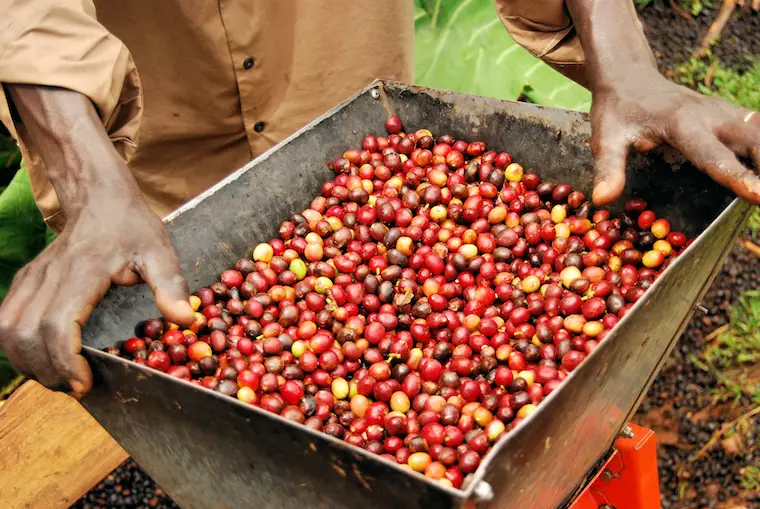
What is the fourth wave of coffee?
So we’ve done one, two and three. What’s next?
Well, it’s really, really hard to predict the future, as anyone who dabbled in a spot of investing around 2007 might tell you. Nonetheless, I’m going to give you my thoughts on what’s to come.
The big elephant in the room is global warming. The world is heating up and that’s going to affect where we can grow coffee. Take Ethiopian coffee for example. A well-loved coffee, famous for its bold fruity flavours. What happens when the climate in Ethiopia can’t grow coffee any more? How the coffee world responds to this challenge is a huge part of the future of the drink.
Here’s more bad news. The coffee price in the West is supported by paying farmers wages we would consider poverty level. Sure, the countries in Africa or Asia or Central America might consider it a reasonable wage, but what happens if and when these countries become more developed? Are consumers over here ready to pay two or three times the price for their favourite drink?
I know this all sounds a bit “doom and gloom” but those are the realities. At the end of the day though, people love their coffee. So, whatever happens, I reckon we’ll still enjoy the same innovation and creativity that brought us the great coffee we drink today
Conclusion
Ethical sourcing of beans, new equipment and focus on high quality coffee. What’s not to love about the Third Wave?
I’ve mentioned it a couple of times already, but if you’re looking to get started with making Third Wave coffee, there’s only one place to start.
Search the “Aeropress” on Amazon. This quirky device uses a vacuum and a filter to produce some of the best coffee. The instructions are simple, too. No learning how to use an espresso machine (not just yet).
And it’s not just for beginners. Plenty of seasoned pros make their coffee with this thing. I mean, there’s an Aeropress World Championship for chrissakes! If you’re looking for somewhere to start, start here.

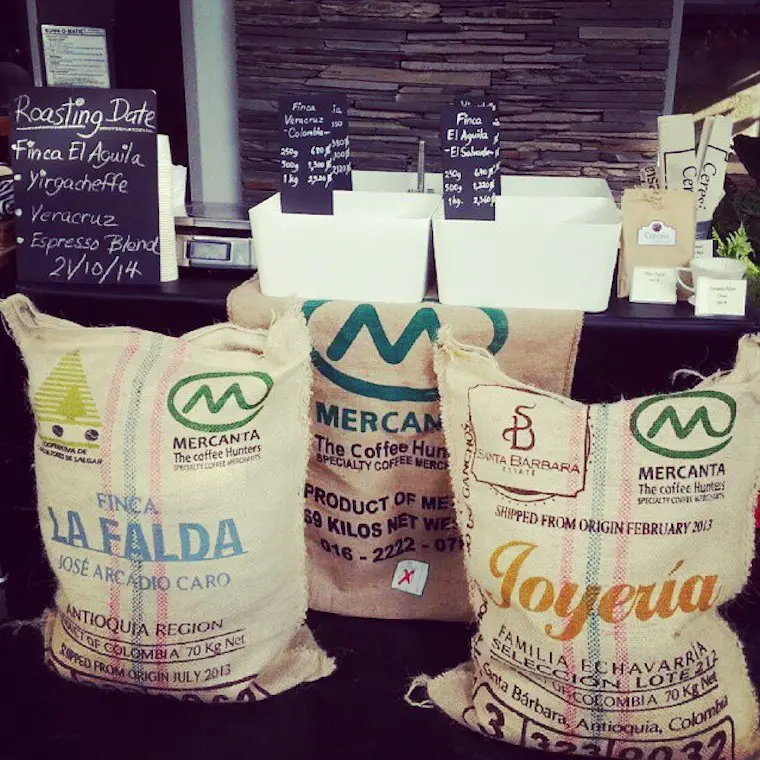
No Comments